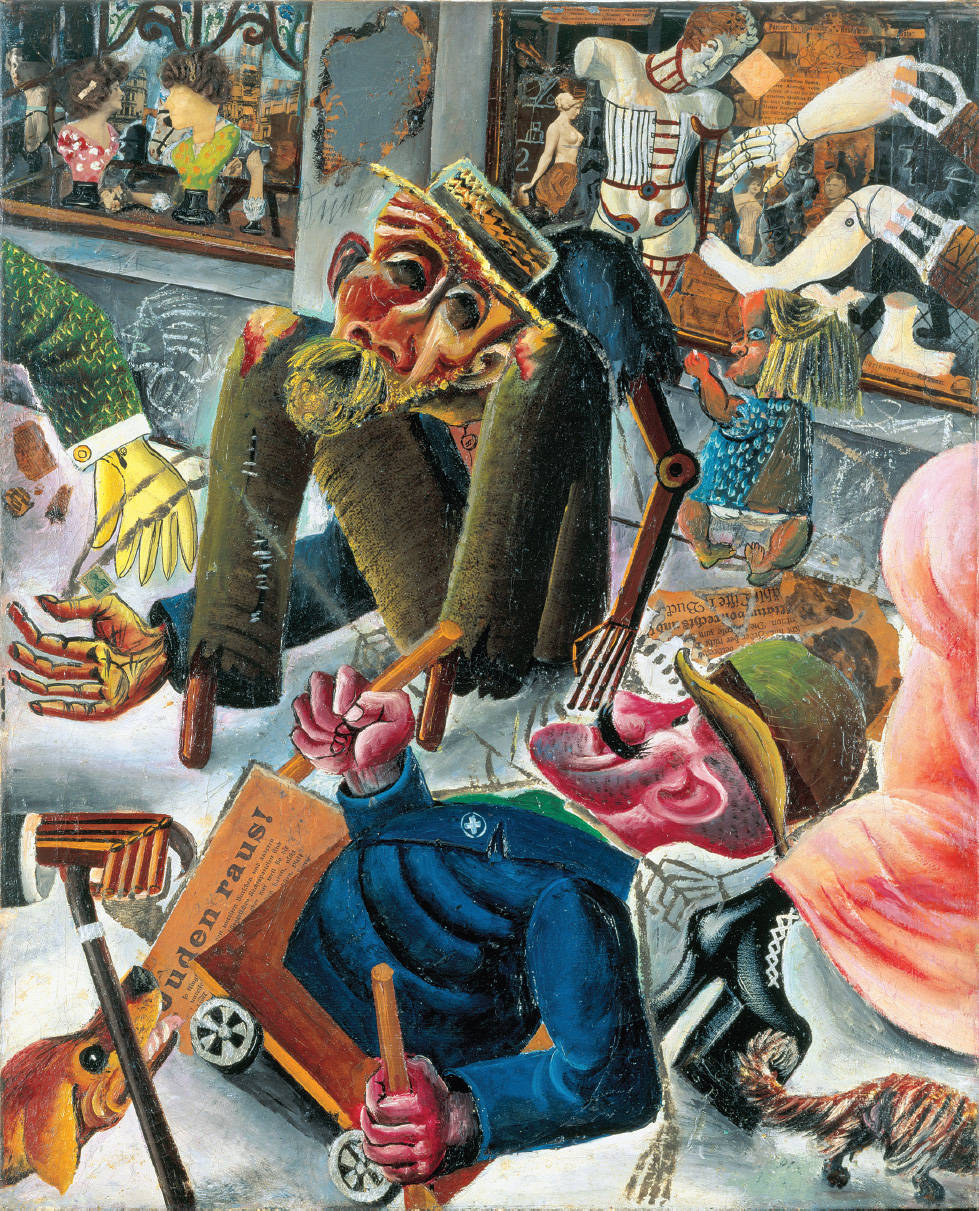Visual Source 20.5
The Aftermath of War
Among the many outcomes of the Great War was the presence in every European country of disillusioned, maimed, and disfigured veterans, many of them literally “men without faces.” For some intellectuals and artists, they represented the fundamentally flawed civilization that had given rise to such carnage. Often neglected or overlooked, such men were reminders of a terrible past that others wanted to forget. The German artist Otto Dix (1891–1969), who served in his country’s military forces throughout the war and was seriously wounded, portrayed this situation in a 1920 painting called Prague Street, shown here as Visual Source 20.5. In 1924, he joined with other artists to mount an exhibition entitled “No More War.” His antiwar activism later earned Dix the enmity of the Hitler regime, which fired him from his academic position and destroyed some of his paintings. Artistically, Dix worked in a style known as the new objectivity, which focused heavily on the horrendous outcomes of the war. It deliberately included subject matter that was upsetting and even ugly, and it made little attempt to create a unified image, preferring to present disconnected “particles of experience.”

Question
How does the painting describe the situation of the veterans?
Question
On the left, the arm of a wealthy man drops a coin into the outstretched hand of a maimed veteran, while on the right, a well-dressed woman in a pink dress and high heels walks by with her dog. What do these features add to the portrayal of the plight of the veterans?
Question
Notice the leaflet on the skateboard of the legless cripple at the bottom. It reads “Juden raus” (Jews out). What does this suggest about the political views of these veterans? Keep in mind that Hitler, although not maimed, was a disillusioned veteran of World War I, as were many of his early followers.
Question
What do the images in the store windows suggest?
Question
What commentary does this painting make on German society after the country’s defeat in World War I? How does it foreshadow what was to come?